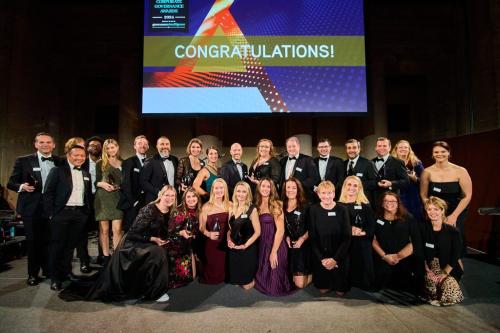Today’s business environment is a complex tangle of rules and regulations. Add to that the increased scrutiny of financial reporting and corporate leadership, and it’s no surprise that legal costs continue to climb.
While minimizing spending on outside legal counsel has long been identified as one of the most significant challenges facing companies, cost effectiveness is not among the top five factors when choosing outside counsel, according to a recent survey of several thousand legal teams. Factors relating to performance and reputation of individual lawyers are generally considered most important, followed by characteristics of the law firm.
The 2005 Association of Corporate Counsel/Serengeti Law Managing Outside Counsel survey, which looks at legal activity from 2004, examines a range of issues concerning the operation of in-house legal teams and their relationships with outside firms.
As much as companies are becoming more sophisticated in their legal needs and the way they evaluate firms, the personal touch has a huge influence on who eventually gets the job. Survey respondents say they still put great stock in referrals from trusted sources – both internal and external.
‘It is interesting to note that by far the most common source of new outside counsel each year is current outside counsel,’ the report states. ‘Despite growing reliance upon technology in other areas, in-house counsel still rely primarily upon personal networks to find new outside counsel.’
According to the survey, the five most common ways of locating new outside counsel all involve personal referrals, with referrals from existing outside counsel topping the list at almost 80 percent. This is the same top five as in past years, although the specific order has shifted.
Technology is also having an impact on the selection process. According to the survey, the growing use of the internet is reflected in the popularity of online directories over published directories, as well as more frequent searches of law firm web sites (17.3 percent, up from 10.5 percent the year before).
Once a firm has made a decision on what resources it will use to source its outside counsel, there are many considerations taken into account when assessing which firm best suits a company’s needs (see table, ‘Selection criteria for outside counsel,’ page 61).
In a possible reflection of the more complicated legal environment facing corporations and the need for specialist advice, the top consideration is the expertise of a firm’s lawyers in a specific area. This is closely followed by past relationships and reputation. It is worth noting that the characteristics of the individual lawyers rank above those of the firm as a whole.
A number of factors that companies use when choosing law firms have arisen this year that were not particularly prevalent in previous years. Companies are increasingly taking diversity of the individuals employed by the firm into account (7 percent). The political influence of a firm is also a consideration, with 7 percent of respondents also listing this as important. Interestingly, there has been a decrease in the importance that companies place on firm size (6.2 percent). The survey goes on to point out that ‘relatively little priority is currently being given to internal law firm policies and characteristics, such as pro bono programs, technology, associate training and firm compensation policies.’
As companies are faced with the rising costs of conducting business, price of service remains a significant factor. The survey shows that total expenditures to outside counsel in 2004 increased by 6 percent over the previous year. Part of the problem is that many of the legal expenses related to litigation, regulation or other issues are unforeseeable. It doesn’t take long for a budget to be tossed aside when unexpected litigation sends legal fees soaring.
‘There’s no doubt that it’s a lawyer’s world in many ways,’ explains William Ide, a partner with McKenna Long & Aldridge in Atlanta. ‘We are in a regulated capitalist society with a lot of legalese. A company will run into regulations and laws frequently, no matter what it does.’
The handling of legal issues such as intellectual property, employment, regulatory or tort claims is frequently referred to outside counsel. As companies grow, more lawyers are called into play to deal with various specialty areas.
Firms down, fees up
The convergence movement of the late 1990s caused many firms to reevaluate their relationships. Indeed, corporate legal departments bloated with outside counsel were dropping law firms like an overloaded fruit tree. But while the number of outside firms retained may have been reduced, corporate dollars flowing to independent firms have been increasing steadily.
To get a handle on expenses, experts say, it takes more than trimming down a list of names. The key to managing outside legal costs is to keep a hand on the steering wheel. ‘There are going to be lots of inefficiencies if the company doesn’t organize and direct the flow of information to outside firms,’ says Ide. ‘The outside lawyers may have great skill and talent, but they need to be managed from a quality assurance and cost point of view.’
The survey indicates that legal teams are demanding more of their outside counterparts and won’t hesitate to leave some behind. Half the respondents (50.7 percent) had terminated relationships with outside counsel firms in 2004. The top reasons given were lack of responsiveness, high fees and poor work quality. Some 73 percent required some type of action to remain retained – for example, fee discounts, mandatory experience levels for associates and regular case updates.
As a former senior vice president and general counsel at Monsanto Corporation, Ide recommends that general counsel receive consistent updates from outside firms. Standing by passively and acting as maitre d’ for outside counsel is never a good idea.
‘Company attorneys need to understand the key issues as well as outside counsel,’ he says. ‘Their understanding of company dynamics is obviously better. A lot of wasted time can be spent by outside counsel trying to educate themselves on corporate issues when that information should be passed on to them.’
To be successful, a relationship with outside counsel should be a collaboration. In fact, trends in partnership between companies and outside legal providers have grown in popularity. One well-known approach is the DuPont legal model, which has been in use for nearly 15 years and considered a great success by observers. Vital components of DuPont’s program involve a shared focus on legal issues by both the company and its outside firms, a mutual commitment to cost control and efficiency, a continuing adjustment of the work model and the use of all available technology.
Indeed, technology plays an important role in managing cost-containment efforts. One increasingly popular method is electronic billing and matter management programs. By having outside counsel submit bills electronically, the process can be streamlined. The programs perform many automatic functions: auditing, comparing budget restrictions, flagging obvious errors or overcharges and generating productivity reports and spending trends.
The use of matter management technology gives law departments the opportunity to be more proactive in managing costs and expenditures. ‘These are methods that have long been used with vendors in other areas of the company but aren’t typically found in law departments,’ says Rob Thomas, vice president of Serengeti Law and the survey’s author. ‘But by tracking this kind of information consistently, various opportunities are there for corporate counsel to act more quickly if costs start to exceed budget.’
Corporations need to raise their expectations of outside firms, explains Thomas. Corporate law departments should insist on regular, written updates on case matters. Periodic conferences should be scheduled to discuss strategies, and the law firm should provide an approximate budget and time frame for complex legal matters, subject to review.
A willingness to cooperate
There also should be a certain expectation of performance from the outside firm, but cooperation of the corporate law department is also critical. Any requests for information or documentation should be met as promptly as possible to avoid unnecessary delays.
Requests for proposals (RFPs) are being issued by approximately 23 percent of the companies surveyed, but interestingly, the rate of response from law firms to RFPs has climbed over previous years – in 2003 there was slightly more than one response to each RFP. In 2004 the average was 10 responses for every RFP. If the numbers continue to climb, more companies may consider the process.
But even the most cooperative company/law firm relationship can produce only limited success. An oft-overlooked part of the solution is an increased focus on risk management within the company.
‘When you’re trying to manage legal expenditures, it’s natural that the first consideration is what type of legal fee arrangement to negotiate,’ says Paul Jock, partner at Jenner & Block in New York. ‘But the best place to begin cost containment is focusing on the risk environment you’re operating in.’
Successful enterprise risk management takes a broad view of both financial and operational risks and calculates how they relate to each other. ‘Some aren’t particularly legal but could become so,’ notes Jock. Product defects, customer loss and employment strikes are all examples of potential risks that can be managed and avoided.
Compliance has also become a critical concern for most in-house counsel. For the first time in the survey’s history, respondents felt that the most important issue has become the need for outside counsel to keep them apprised of company activities with possible legal implications.
Dialogue and a steady flow of information go a long way toward keeping expenses in line. Outlining and tightening controls and expectations keep the company in sync with progress. It may require constructing a new way of doing business, but the result will be a corporate legal department with clearer goals and better results.








